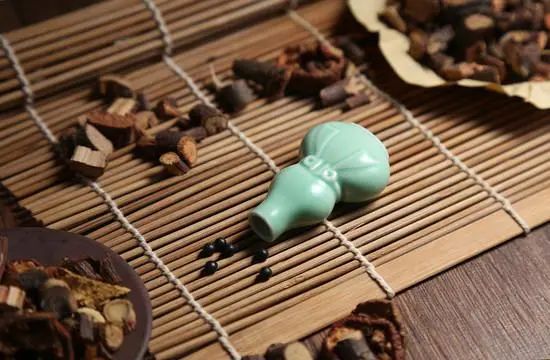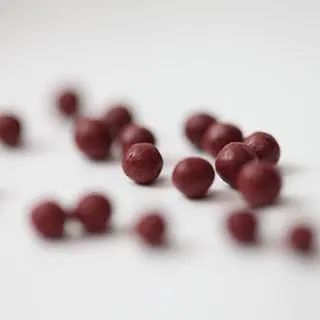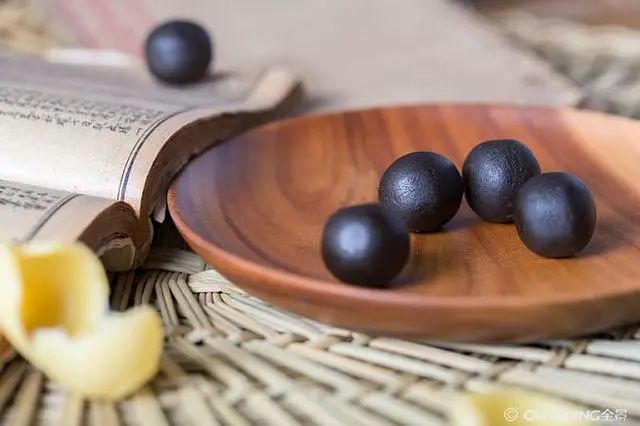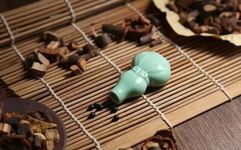There are many traditional Chinese patent medicines that activate blood circulation and resolve stasis, such as Fangpian Xueshuantong (Compound Xueshuantong), Naoshuantong (Brain Xueshuantong), Xuesaitong (Blood Stasis Tong), Naoluotong (Brain Meridian Tong), Tongxinluo (Heart Channel Tong), and Huoxuetongmai (Activate Blood and Open Meridians). These medicines may sound like tongue twisters, but they actually have different effects and indications. It is crucial not to take the wrong one.

Although they are all classified as medicines that activate blood circulation and resolve stasis, their effects differ and have specific focuses. Below, Yixian Yaoshi introduces ten traditional Chinese patent medicines for your learning and reference.

1. Guangxin Suhe Wan (Coronary Heart Suhe Pill) This medicine belongs to the category of Qi-regulating and harmonizing drugs. Suhexiang (Liquidambars) is warm and aromatic, while Bingpian (Borneol) is cool and aromatic, both serving as the monarch drugs. Ruxiang (Frankincense) and Tanxiang (Sandalwood) are warm and disperse, warming the meridians and activating blood circulation, serving as minister drugs. Tumuxiang (Atractylodes) strengthens the spleen and stomach, regulates Qi, resolves depression, and alleviates pain, serving as an assistant drug. Together, these herbs work to regulate Qi, open the chest, warm the meridians, and relieve pain. It is used for chest obstruction due to cold-congealed blood vessels, angina pectoris, presenting symptoms such as chest pain radiating to the back, chest tightness, shortness of breath, fatigue, and cold limbs.Guangxin Suhe Wan warms and disperses cold, and is not suitable for those with heat closure syndrome. It is contraindicated for those with Yin deficiency and excess fire, as the composition of this medicine consists mainly of warm and aromatic herbs. The main adverse reaction is gastrointestinal discomfort; caution is advised for those with gastrointestinal diseases or spleen and stomach weakness.

2. Fangpian Xueshuantong Jiao Nang (Compound Xueshuantong Capsules) This is composed of four classic herbs: Sanqi (Notoginseng), Huangqi (Astragalus), Danshen (Salvia miltiorrhiza), and Xuan Shen (Scrophularia). It is a blood-regulating agent with the effects of activating blood circulation, resolving stasis, tonifying Qi, and nourishing Yin. It is indicated for retinal vein occlusion with blood stasis and Qi-Yin deficiency, presenting symptoms such as decreased vision or visual abnormalities, retinal hemorrhage, and for stable angina pectoris with blood stasis and Qi-Yin deficiency. In modern medicine, it is often used to treat hyphema, macular hemorrhage, retinal vein occlusion, carotid atherosclerosis, prevent recurrent cerebral infarction, treat dry eye syndrome, hypertension, and angina pectoris.3. Naoshuantong Jiao Nang (Brain Xueshuantong Capsules) This is composed of five herbs: Puhuang (Typha), Chishaoshu (Red Peony), Yujin (Curcuma), Tianma (Gastrodia), and Loulu (Rhizoma). It has the effects of activating blood circulation, opening the meridians, dispelling wind, and resolving phlegm. It is used for ischemic stroke caused by wind-phlegm and blood stasis during the acute and recovery phases. Symptoms include hemiplegia, slurred speech, facial droop, numbness on one side, shortness of breath, fatigue, dizziness, and tinnitus, particularly in cases of cerebral infarction with the aforementioned symptoms. Naoshuantong Jiao Nang is mainly suitable for stroke and cerebral infarction.4. Xuesaitong Jiao Nang (Blood Stasis Tong Capsules) This is composed of total saponins of Sanqi (Notoginseng). It has the effects of activating blood circulation, resolving stasis, and opening the meridians. It can inhibit platelet aggregation and increase cerebral blood flow. It is used for cerebral blood stasis, hemiplegia due to stroke, heart vessel obstruction, and chest pain; it is suitable for patients with cold-heat indistinct blood stasis syndrome.5. Tongxinluo Jiao Nang (Heart Channel Tong Capsules) This is a blood-regulating agent composed of Ren Shen (Ginseng), Shuizhu (Leech), Quanshe (Scorpion), Chishaoshu (Red Peony), Chantou (Cicada Slough), Tumubichong (Earthworm), Wugong (Centipede), Tanxiang (Sandalwood), Jiangxiang (Incense), Ruxiang (Frankincense, processed), Suanzao Ren (Sour Jujube Seed, roasted), and Bingpian (Borneol). In this formula, Ren Shen tonifies heart Qi, serving as the monarch drug. Shuizhu and Tumubichong activate blood circulation and resolve stasis, opening the meridians; Quanshe, Wugong, and Chantou are insect drugs that help the other herbs to open the meridians and relieve spasms, serving as minister drugs. Chishaoshu activates blood circulation and disperses blood stasis, relieving pain; Bingpian is aromatic and disperses, serving as an assistant drug. Together, these herbs work to tonify Qi, activate blood circulation, open the meridians, and relieve pain. It is indicated for angina pectoris due to heart Qi deficiency and blood stasis obstruction, presenting symptoms such as chest tightness, angina, palpitations, spontaneous sweating, shortness of breath, and fatigue, with a purple or dark tongue or stasis spots. It is also used for stroke with Qi deficiency and blood stasis obstruction, presenting symptoms such as hemiplegia or unilateral numbness, facial droop, and slurred speech.Note: This medicine is contraindicated for bleeding disorders, pregnant women, and women during menstruation, as well as for those with Yin deficiency and excess fire type stroke.6. Huoxuetongmai Pian (Activate Blood and Open Meridians Tablets) This is composed of Jixueteng (Spatholobus), Sanqi (Notoginseng), Danshen (Salvia miltiorrhiza), Chishaoshu (Red Peony), Honghua (Safflower), Jiangxiang (Incense), Yujin (Curcuma), Sanqi (Notoginseng), Chuanxiong (Ligusticum), Chenpi (Dried Tangerine Peel), Muxiang (Aucklandia), Shichangpu (Acori), Gouqizi (Goji Berries), Jiu Huangjing (Fermented Polygonatum), and Ren Shen (Ginseng). In this formula, Sanqi, Huangjing, Mai Dong, Chenpi, Jixueteng, and Danshen activate blood circulation and regulate Qi to relieve pain; Ren Shen, Chishaoshu, Gegen (Pueraria), and Yujin nourish and activate blood circulation; Honghua, Jiangxiang, Muxiang, Chuanxiong, Taoren (Peach Kernel), and Bingpian regulate Qi, activate blood circulation, and relieve pain. Together, these herbs work to regulate Qi, activate blood circulation, and open the meridians to relieve pain. It is indicated for angina pectoris due to Qi stagnation and blood stasis.7. Qishen Yiqi Wan (Qi and Shen Tonifying Pill) This is composed of Huangqi (Astragalus), Danshen (Salvia miltiorrhiza), Sanqi (Notoginseng), and Jiangxiangyou (Incense Oil). It tonifies Qi, opens the meridians, and activates blood circulation to relieve pain. It is indicated for chest obstruction due to Qi deficiency and blood stasis, presenting symptoms such as chest tightness, chest pain, shortness of breath, palpitations, pale complexion, spontaneous sweating, a thick tongue with teeth marks, dark or purple tongue with stasis spots, and a deep or wiry pulse. It is suitable for patients with coronary heart disease and angina pectoris with the aforementioned symptoms.8. Yangxin Shi Pian (Nourishing Heart Tablets) This is composed of Huangqi (Astragalus), Dangshen (Codonopsis), Danshen (Salvia miltiorrhiza), Gegen (Pueraria), Yinyanghuo (Epimedium), Shanzha (Hawthorn), Dihuang (Rehmannia), Danggui (Angelica), Huanglian (Coptis), Cu Yanhusuo (Vinegar-processed Corydalis), Lingzhi (Reishi), Ren Shen (Ginseng), and Zhi Gancao (Honey-fried Licorice). In this formula, Huangqi, Yinyanghuo, Dangshen, Lingzhi, Ren Shen, and Zhi Gancao tonify Qi and stabilize the foundation, connecting the heart and kidney; Danshen, Danggui, Shanzha, and Cu Yanhusuo activate blood circulation and resolve stasis, relieve pain; Gegen, Dihuang, and Huanglian nourish Yin, clear heat, calm the mind, and nourish the heart. Together, these herbs work to strengthen the body, tonify Qi, activate blood circulation, and relieve pain. It is indicated for coronary heart disease, angina pectoris, myocardial infarction, and combined conditions of hyperlipidemia and hyperglycemia with the aforementioned symptoms. Yangxin Shi Pian is characterized by its ability to strengthen Qi, gently activate blood circulation, and simultaneously nourish the heart and calm the mind.9. Xiaoshuantong Luo Pian (Dissolve Thrombus and Open Meridians Tablets) This is composed of Chuanxiong (Ligusticum), Danshen (Salvia miltiorrhiza), Huangqi (Astragalus), Zexie (Alisma), Sanqi (Notoginseng), Huaihua (Sophora), Guizhi (Cinnamon), Yujin (Curcuma), Muxiang (Aucklandia), Bingpian (Borneol), and Shanzha (Hawthorn). It activates blood circulation, resolves stasis, warms the meridians, and opens the channels. It is used for stroke caused by blood stasis obstruction, presenting symptoms such as dull expression, slurred speech, cold hands and feet, and limb pain; it is suitable for ischemic stroke and hyperlipidemia with the aforementioned symptoms.Xiaoshuantong Luo Pian may cause adverse reactions such as nausea, vomiting, abdominal pain, diarrhea, dizziness, headache, rash, and itching. It is contraindicated for pregnant women and those with hemorrhagic stroke. Caution is advised for those with prominent Yin deficiency and internal heat or phlegm-heat syndrome.10. Liqi Huoxue Diyan (Qi Regulation and Blood Activation Pills) This is composed of Da Guo Mu Jiangzi (Ginger), Xiaobai (Garlic), Chuanxiong (Ligusticum), and Aiye (Mugwort). In this formula, Da Guo Mu Jiangzi opens Yang and activates blood circulation, serving as the monarch drug; Xiaobai and Chuanxiong open Yang, disperse knots, and regulate Qi, serving as minister drugs; Aiye opens the orifices, awakens the spirit, clears heat, and relieves pain, serving as an assistant drug. Overall, this formula combines warming and cooling, effectively opening Yang and regulating Qi, while also activating blood circulation and resolving stasis. It is particularly effective for coronary heart disease and angina pectoris due to heart Yang deficiency and blood stasis obstruction.
Note: Some text and image resources in this article are sourced from the internet. The purpose of reposting this article is to convey more information. If there are any errors in source attribution or infringement of your legal rights, please notify us immediately, and we will delete it promptly and apologize to you.
Previous Highlights: Qizhi Xiangfu Wan (Seven Formulations of Xiangfu Pill) efficacy and function, Diao Wei Shugan Wan (Regulate Stomach and Soothe Liver Pill) efficacy and function, Qi and Blood Dual Supplementation? 6 types of Qi and Blood tonifying traditional Chinese patent medicines for dialectical application.

